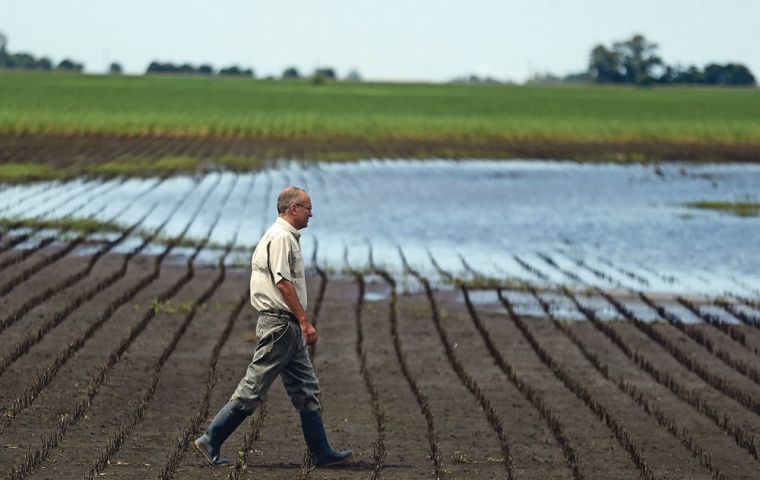MercoPress. South Atlantic News Agency
Drought in Argentina will have a great impact on agriculture production
 “La Niña” phenomenon, for the third consecutive year, “has worsened the situation, complicating sowing, crop development and area suitable for planting”
“La Niña” phenomenon, for the third consecutive year, “has worsened the situation, complicating sowing, crop development and area suitable for planting” The drought affecting over half of Argentina's territory means agricultural production levels this year will be lower than during the 2021/2022 season and below the five-year average, especially for wheat.
This is the warning report from the Rosario Grains Exchange, which said the 2022/2023 season is characterized by a complex scenario in which production of the main grains will suffer significant reductions compared with projections made at the start of the season last September.
This complexity is the result of climatic factors, rising input costs and policies that, taken together, “modify producers’ decisions,” the report said.
But the prolonged “La Niña” phenomenon, which has occurred for the third consecutive year, “has worsened the situation yet further, complicating sowing and crop development and the area suitable for planting, triggering a drop in potential yields,” the Exchange warned.
Likewise, the report added that the productive stage of winter crops is over and given the drought, production levels are well below previous estimates and the five-year average.
The drought in Argentina is also affecting summer crops, therefore the scenario for the coming months is still uncertain for soybean, corn and sunflower, they added.
The Rosario Grains Exchange also pointed out that even when some rainfall has been registered in farming areas in the last weeks, they have been insufficient, well below the average of recent years.
Therefore, the institution revealed that since last September, barley and wheat production fell by 1.2 million and 5.1 million tons, respectively, and ended up with production figures of 3.8 million and 12.4 million.
In broad terms, they said the lack of rain throughout the farming season, together with the repeated frosts in critical times for yield definitions, have caused reductions and losses of farming areas: the Córdoba Center-North and South, and the North of La Pampa–West of Buenos Aires are the most affected.
Likewise, at the beginning of the wheat sowing season, the lack of surface humidity over the center-north of the farming area prevented farmers from completing their sowing plans, which took away from the 2022/23 campaign some 600,000 hectares of wheat that were concentrated mostly in the North West, the North East, Cordoba and Santa Fe’s Center-North, and the Northern Core.
The Rosario Grains Exchange warned that the fall in grains production will cause a reduction of export volumes, in tax collection linked to the sector, in much needed foreign currency and its overall contribution to the GDP.




Top Comments
Disclaimer & comment rulesCommenting for this story is now closed.
If you have a Facebook account, become a fan and comment on our Facebook Page!